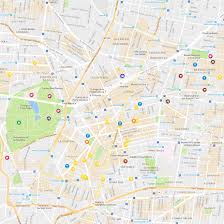The Fascinating World of Maps
Maps have been an integral part of human civilization for centuries, serving as essential tools for navigation, exploration, and understanding the world around us. From ancient hand-drawn maps on parchment to modern digital mapping technologies, the evolution of maps has been a testament to human ingenuity and curiosity.
The Art and Science of Cartography
Cartography, the art and science of mapmaking, combines elements of geography, design, and data visualization to create representations of our physical and conceptual landscapes. Skilled cartographers use a variety of techniques to accurately depict terrain, landmarks, political boundaries, and more.
The Power of Maps
Maps hold immense power in their ability to convey information in a visual and easily understandable format. They help us plan journeys, analyze geographic patterns, track changes over time, and make informed decisions about everything from urban planning to disaster response.
Types of Maps
There are many different types of maps designed for specific purposes. Some common types include:
- Road maps for navigation
- Topographic maps for terrain analysis
- Political maps for showing borders and territories
- Climate maps for weather patterns
- Historical maps for understanding the past
The Digital Age of Mapping
In recent years, advances in technology have revolutionized the field of mapping. Geographic Information Systems (GIS) allow for complex spatial analysis and interactive mapping applications. Online mapping services like Google Maps have made it easier than ever to explore the world from the comfort of our devices.
The Future of Mapping
As we look to the future, mapping technologies will continue to evolve with innovations such as augmented reality mapping, real-time data integration, and 3D mapping capabilities. The possibilities are endless as we strive to create more detailed, dynamic, and accessible maps that enhance our understanding of the world.
In conclusion, maps are not just tools for navigation; they are windows into our world’s past, present, and future. Their beauty lies in their ability to distill complex information into visual representations that inspire wonder and discovery.
Understanding Maps: Common Questions and Answers
- What is a map and what is its purpose?
- How are maps created and what tools are used in cartography?
- What are the different types of maps and their uses?
- How has technology impacted the field of mapping?
- Can maps be updated to reflect changes in geography or political boundaries?
What is a map and what is its purpose?
A map is a visual representation of geographic information, typically depicting the physical features of an area, such as landforms, water bodies, roads, and political boundaries. Its primary purpose is to provide a spatial understanding of a location or region, aiding in navigation, planning, analysis, and communication. Maps serve as essential tools for orienting oneself in unfamiliar surroundings, exploring new territories, facilitating decision-making in various fields like urban planning and natural resource management, and conveying complex data in a clear and accessible manner. Ultimately, maps play a crucial role in helping us make sense of the world around us by visually organizing and presenting information about our environment.
How are maps created and what tools are used in cartography?
Maps are created through the meticulous process of cartography, which involves a combination of art and science. Cartographers utilize a variety of tools and techniques to accurately represent geographical features on a map. Traditional methods include surveying equipment like theodolites and compasses to measure distances and angles, as well as drafting tools for precise drawing. In modern cartography, digital technologies such as Geographic Information Systems (GIS), satellite imagery, GPS data, and computer software like GIS software and graphic design programs have revolutionized the mapmaking process, allowing for more detailed and dynamic maps to be created with greater efficiency and accuracy. The evolution of mapping tools continues to shape the way we perceive and interact with our world through the visual language of maps.
What are the different types of maps and their uses?
Maps come in various types, each serving a specific purpose based on the information they aim to convey. Some common types of maps include road maps, which are essential for navigation and route planning; topographic maps, used for analyzing terrain features and elevation changes; political maps, depicting borders and territories of countries or regions; climate maps, showing weather patterns and climatic zones; and historical maps, providing insights into the past geographical landscapes. Each type of map plays a crucial role in helping us understand our world better, whether it’s for travel, research, urban planning, environmental studies, or historical analysis. By utilizing different types of maps appropriately, we can gain valuable insights and make informed decisions across various fields.
How has technology impacted the field of mapping?
Technology has had a transformative impact on the field of mapping, revolutionizing how we create, analyze, and interact with geographic information. The advent of Geographic Information Systems (GIS) has enabled mapmakers to process vast amounts of spatial data with precision and efficiency, leading to more detailed and accurate maps. Furthermore, the rise of satellite imagery, GPS technology, and digital mapping tools has made it possible to create dynamic and interactive maps that offer real-time updates and personalized navigation experiences. Technology has not only expanded our capabilities in mapping but has also opened up new avenues for exploration and understanding of the world around us.
Can maps be updated to reflect changes in geography or political boundaries?
Maps can indeed be updated to reflect changes in geography or political boundaries. Cartographers and geographic information specialists regularly update maps to ensure accuracy and relevance. Changes in geography, such as natural disasters, urban development, or shifts in land formations, are reflected through updated mapping data. Similarly, alterations in political boundaries due to treaties, border disputes, or geopolitical shifts are meticulously incorporated into maps to provide up-to-date information for navigation, planning, and analysis. The dynamic nature of maps allows them to adapt to evolving landscapes and territories, making them invaluable tools for understanding the ever-changing world around us.

